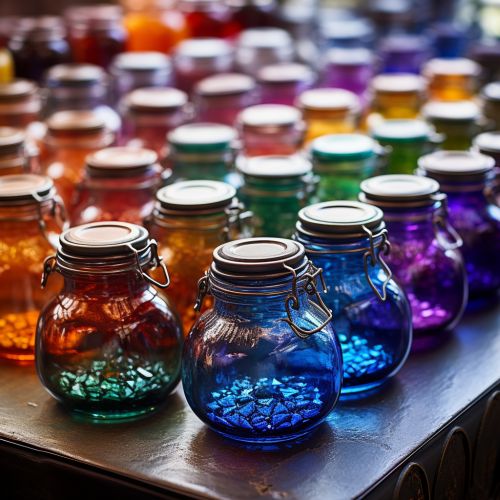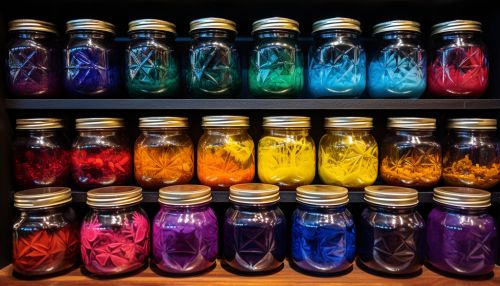Dye
Introduction
A dye is a colored substance that has an affinity to the substrate to which it is being applied. It is used to color fabric, hair, and other materials. The dye is generally applied in an aqueous solution, and may require a mordant to improve the fastness of the dye on the fiber.


History
The practice of dyeing can be traced back to the Neolithic period. In the history of dyeing, natural dyes such as woad, indigo, saffron, and madder were used in the early times. The first synthetic dyes were made in the mid-19th century.
Types of Dyes
Dyes are classified based on their solubility and chemical properties. The major types include acid dyes, basic dyes, direct or substantive dyes, vat dyes, reactive dyes, disperse dyes, and sulfur dyes.
Acid Dyes
Acid dyes are water-soluble anionic dyes that are applied to fibers such as silk, wool, nylon and modified acrylic fibers using neutral to acid dye baths.
Basic Dyes
Basic dyes are water-soluble cationic dyes that are mainly applied to acrylic fibers.
Direct or Substantive Dyes
Direct or substantive dyes have a high affinity for cellulose fibers and are used to dye cotton, paper, and other cellulose fibers.
Vat Dyes
Vat dyes are insoluble in water and cannot dye fibers directly. However, they can be converted into soluble form by reduction in alkaline solution which allows them to affix to the fibers.
Reactive Dyes
Reactive dyes form covalent bonds with the fiber, making them among the most permanent of dyes.
Disperse Dyes
Disperse dyes are non-ionic dyes that are used to color synthetic fibers like nylon, cellulose acetate, polyester, and acrylic fibers.
Sulfur Dyes
Sulfur dyes are inexpensive dyes used to dye cotton with dark colors.
Dyeing Techniques
There are several techniques of dyeing including direct application, yarn dyeing, piece dyeing, and garment dyeing.
Direct Application
The direct application process of dyeing involves applying the dye directly to the textile.
Yarn Dyeing
In yarn dyeing, the yarns are dyed before they are woven or knitted into fabrics.
Piece Dyeing
Piece dyeing is the process of dyeing an entire piece or bolt of cloth at once.
Garment Dyeing
In garment dyeing, the garments are dyed after they have been cut and sewn.
Environmental Impact
The dyeing process has an impact on the environment as it can lead to water pollution. The use of natural dyes has been encouraged as an alternative to synthetic dyes.
